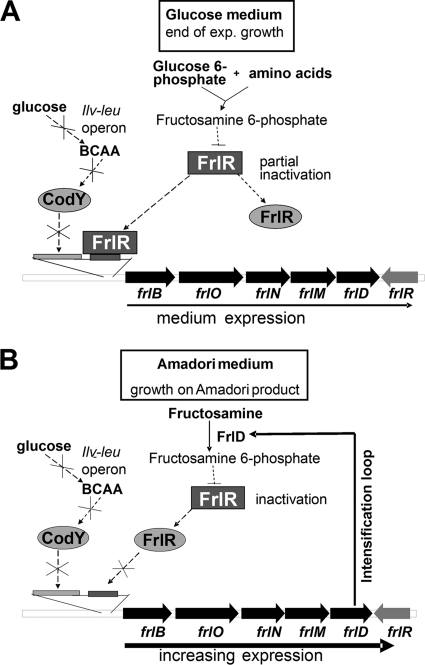Fig. 7.
Postulation of the regulation of the frl genes in B. subtilis. (A) During growth on glucose, intracellular glucose 6-phosphate leads to the glycation of proteins and amino acids; such fructosamine 6-phosphates partially inactivate FrlR, thereby promoting expression of the frl operon. CodY is inactive at the end of the exponential growth phase, due to glucose exhaustion. During growth on glucose, the CcpA-mediated activation of the ilv-leu operon causes the synthesis of the branched-chain amino acids (BCAA) isoleucine, leucine, and valine acting as CodY activators. (B) At the beginning of growth on Amadori products, import and phosphorylation of the fructosamines (by FrlD) represent the limiting step, since the frl operon is initially expressed at a low level. The more Amadori products are imported and phosphorylated (with the help of increasing expression of frlONMD), the more FrlR is inactivated, resulting in the further increase of expression, initiating an intensification loop and allowing for positive feedback regulation.

